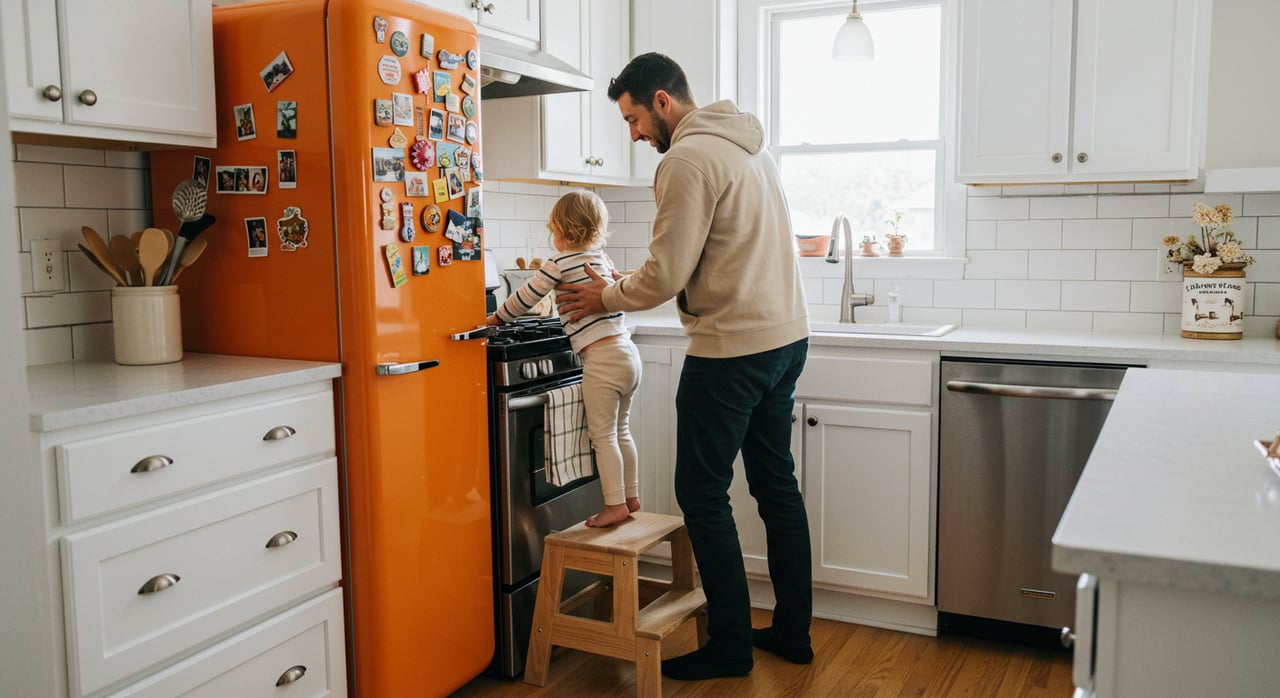Creating a safe home environment for children is a top priority for parents and guardians. Ensuring that every room in the house is child-proofed can prevent accidents and injuries, providing peace of mind. This guide outlines the key areas to focus on to make your home a safe haven for children.
Securing the Living Room
The living room is often a central hub in the home where families gather. It is essential to make this area safe for children to play and relax.
Furniture and TV Anchoring
Heavy furniture and televisions pose a significant risk if they are not securely anchored. Children can easily pull these items over while playing or climbing. Use brackets and wall straps to secure bookshelves, dressers, and TVs to the wall. This precaution prevents tipping and potential injuries.
Electrical Safety
Electrical outlets should be covered with safety plugs to prevent curious little fingers from exploring them. Ensure that cords are neatly tucked away and out of reach. If possible, use cord shorteners or covers to minimize the risk of children pulling on or chewing electrical cords.
Child-Proofing the Kitchen
The kitchen is another area that requires diligent child-proofing due to the presence of sharp objects, hot surfaces, and chemicals.
Locking Cabinets and Drawers
Install child-proof locks on cabinets and drawers that contain dangerous items such as knives, scissors, cleaning supplies, and small appliances. Consider using magnetic locks, which are discreet and effective. Store potentially hazardous items out of reach whenever possible.
Stove and Oven Safety
Use stove knob covers to prevent children from turning on the burners. Additionally, consider installing a stove guard to create a barrier between the child and the hot surface. Always turn pot handles inward to reduce the risk of hot food or liquids being pulled down.
Bedroom Safety
A child's bedroom should be a safe and peaceful place to sleep and play. Proper safety measures ensure this environment remains hazard-free.
Safe Sleep Practices
For infants, use a crib that meets current safety standards. The mattress should fit snugly without any gaps. Avoid using soft bedding, pillows, or stuffed animals in the crib, as these can pose suffocation hazards. For older children, ensure that bunk beds have secure guardrails and are appropriate for the child's age.
Window and Blind Safety
Install window guards or stops to prevent children from falling out of windows. Keep blind cords out of reach, as they can pose a strangulation risk. Cordless blinds are a safer option if you are considering replacing your window treatments.
Bathroom Precautions
The bathroom can be a hazardous place for children due to the presence of water, medications, and cleaning products.
Supervision and Safety Devices
Never leave young children unattended in the bathroom. Use a non-slip mat in the tub to prevent slips and falls. Keep medications and cleaning products in a locked cabinet and out of reach.
Water Temperature and Drowning Prevention
Set your water heater to a maximum of 120 degrees Fahrenheit to prevent scalding. Always supervise children closely during bath time and never leave them alone, even for a moment. Use a tub thermometer to check the water temperature before placing your child in the bath.
Ensuring Safety in the Yard
Outdoor play is essential for children's development, but the yard must be a safe environment.
Fencing and Gates
Ensure that your yard is securely fenced, with gates that latch and lock. This precaution prevents children from wandering off and keeps unwanted visitors out. Check the fence regularly for any gaps or damage that could allow a child to escape.
Safe Play Equipment
Inspect play equipment regularly to ensure it is in good condition and free of hazards. Anchor swing sets and other large items securely to the ground. Place play equipment on soft surfaces like mulch or rubber mats to cushion falls.
Maintaining a Safe Home Environment
Regular maintenance and vigilance are key to maintaining a safe home environment for children.
Routine Safety Checks
Conduct regular safety checks to ensure that all child-proofing measures are intact and functioning correctly. Look for potential hazards such as loose flooring, exposed nails, or broken toys. Address these issues promptly to prevent accidents.
Educating Children on Safety
Teaching children about safety is an important part of keeping them safe. Explain the dangers of certain areas and items in the home and encourage safe behavior. Role-playing scenarios can help children understand and remember safety rules.
Jeffrey Earl Warren: Your Partner in St. Helena Real Estate
Creating a safe home environment for children involves careful planning and regular maintenance. By following these guidelines, you can ensure that your home is a secure place for your little ones to grow and thrive.
For more personalized advice and expert guidance on St. Helena, CA, real estate, reach out to
Jeffrey Earl Warren today to begin your journey.










